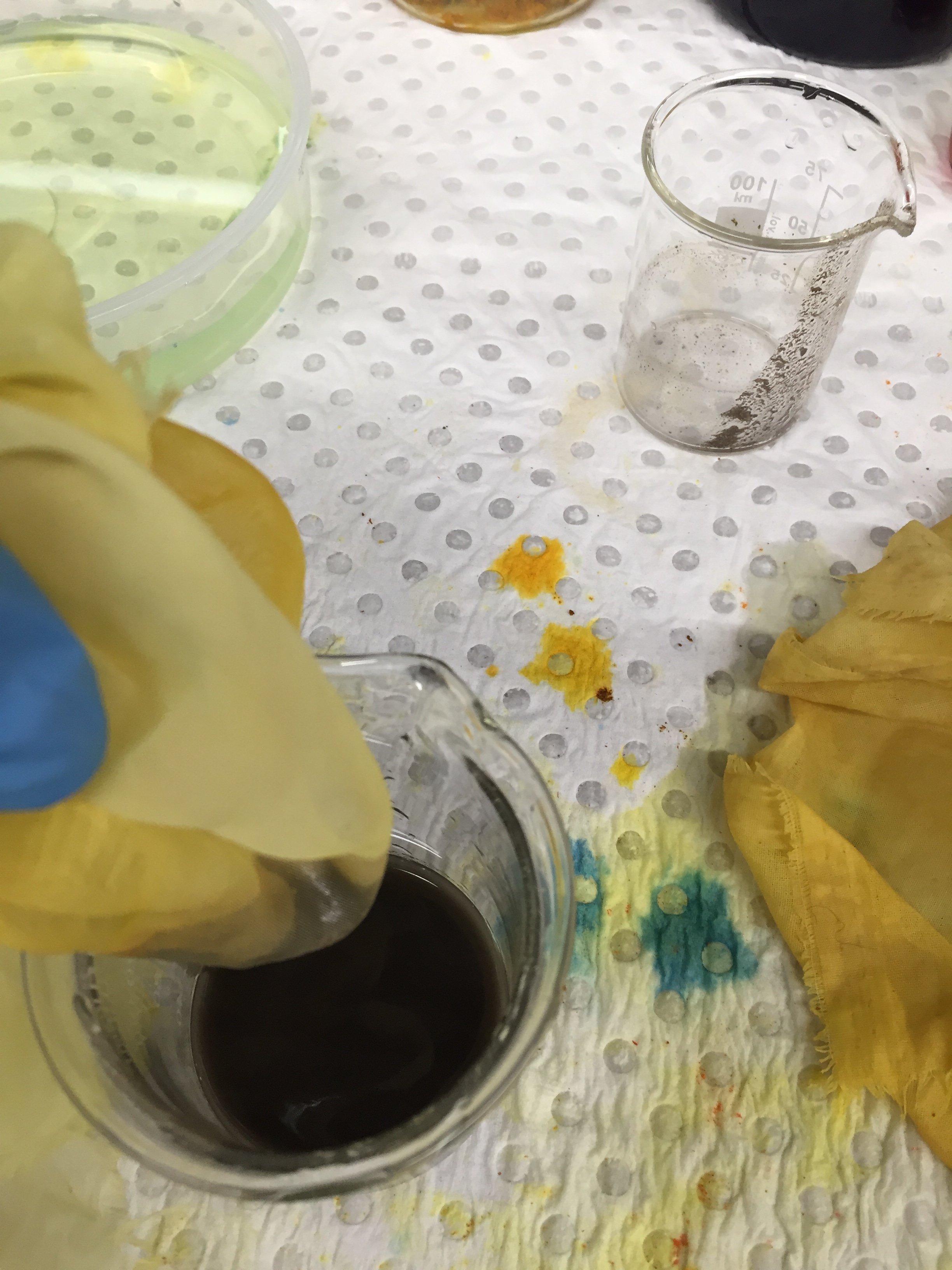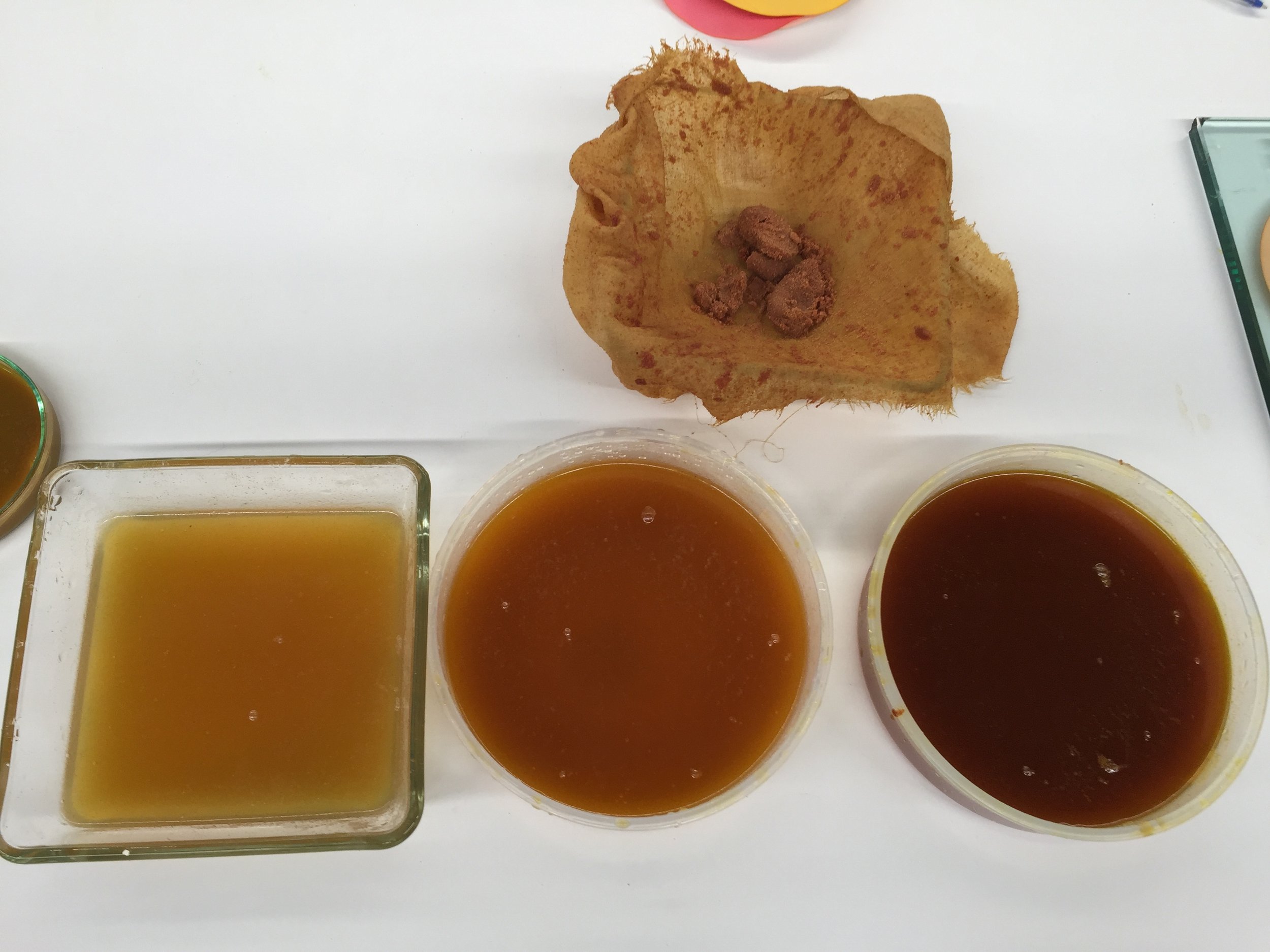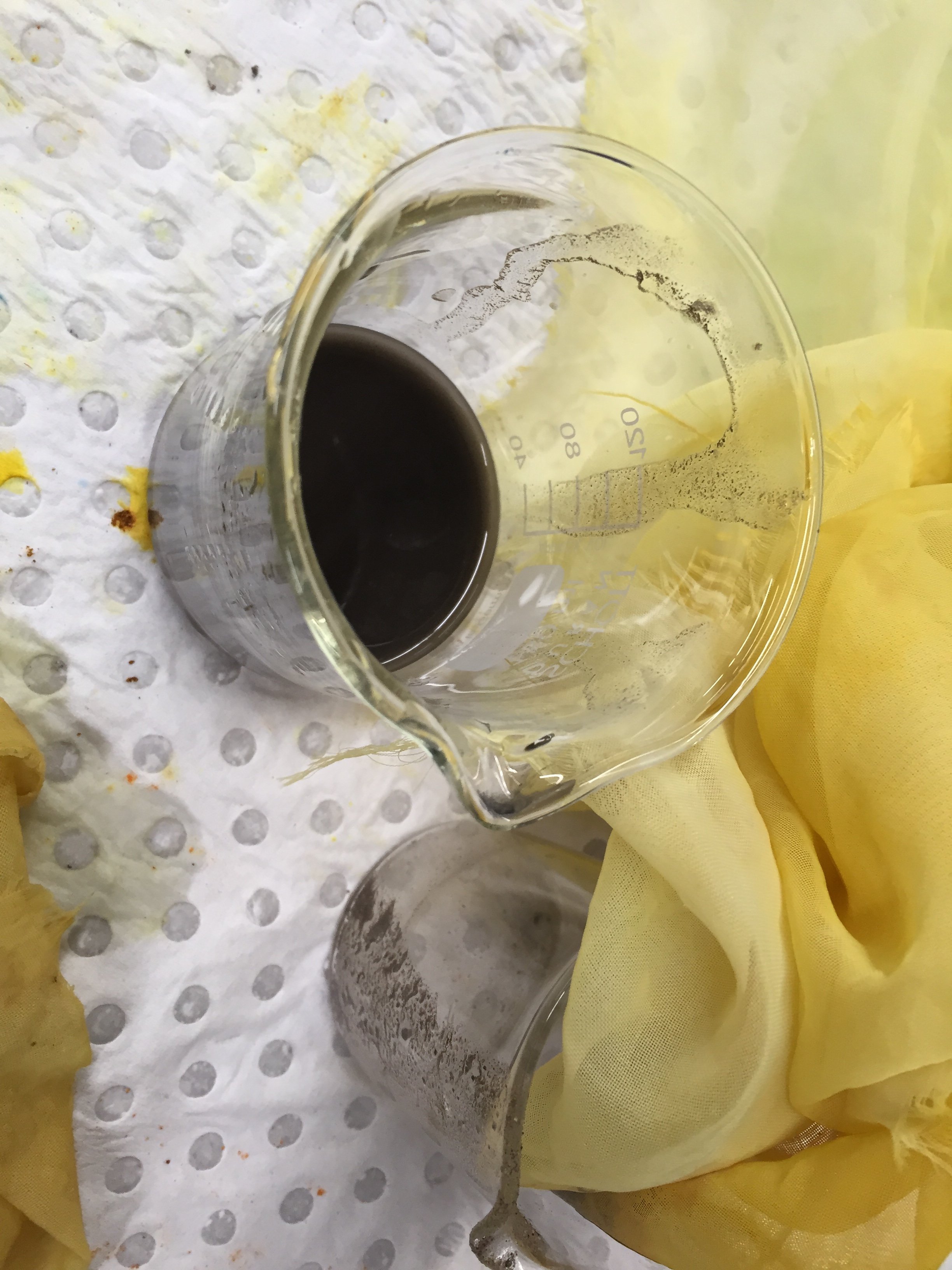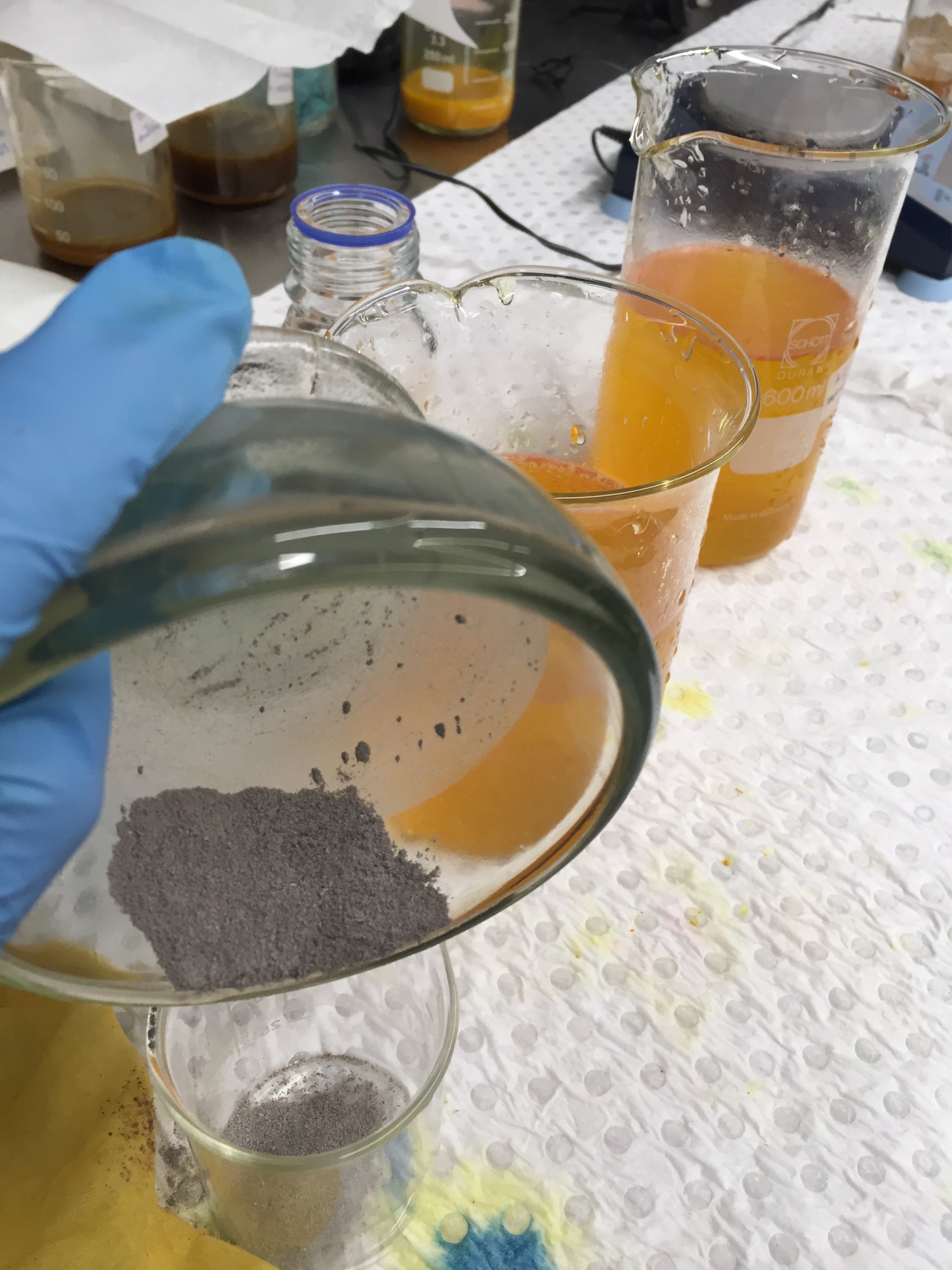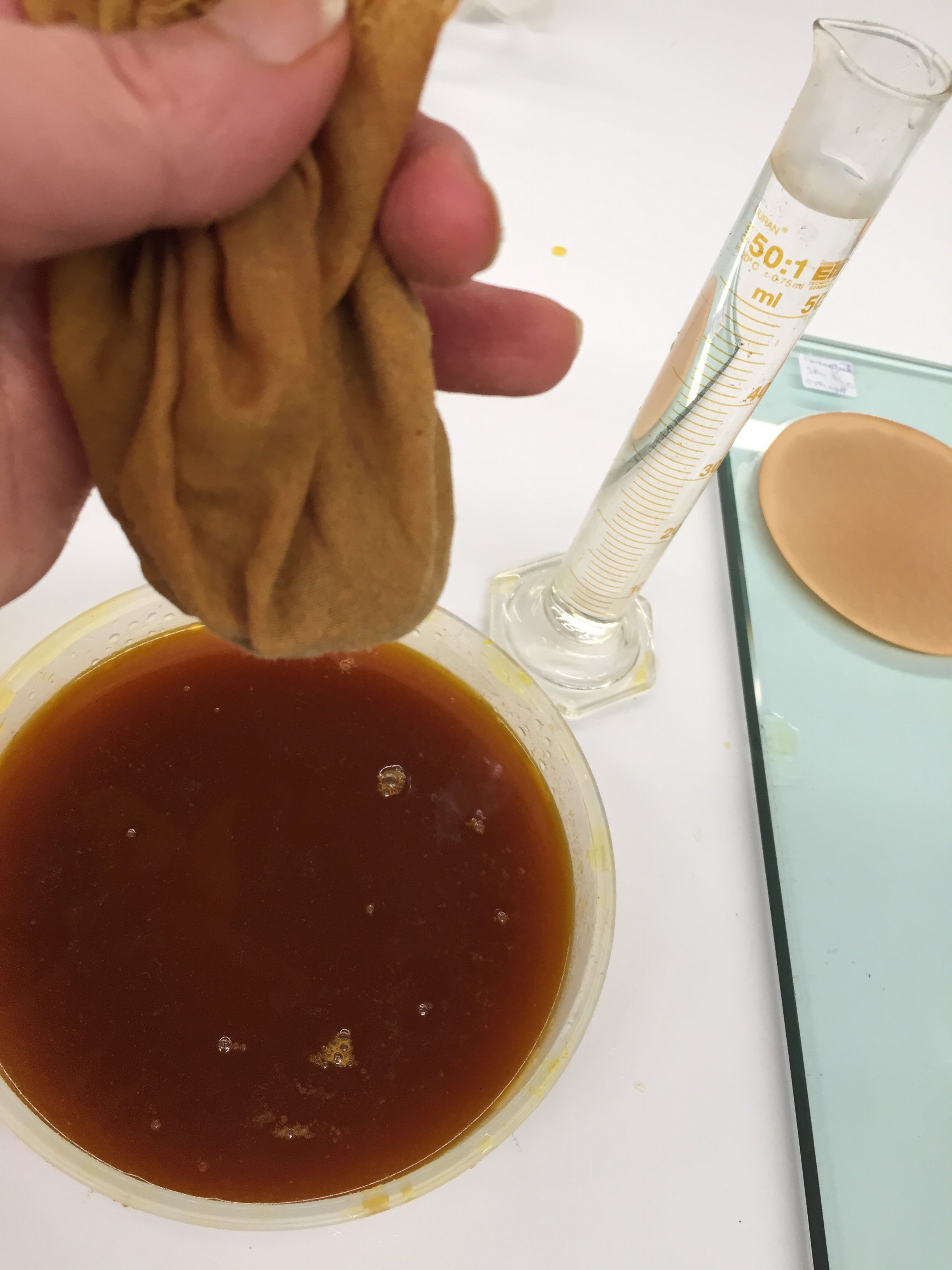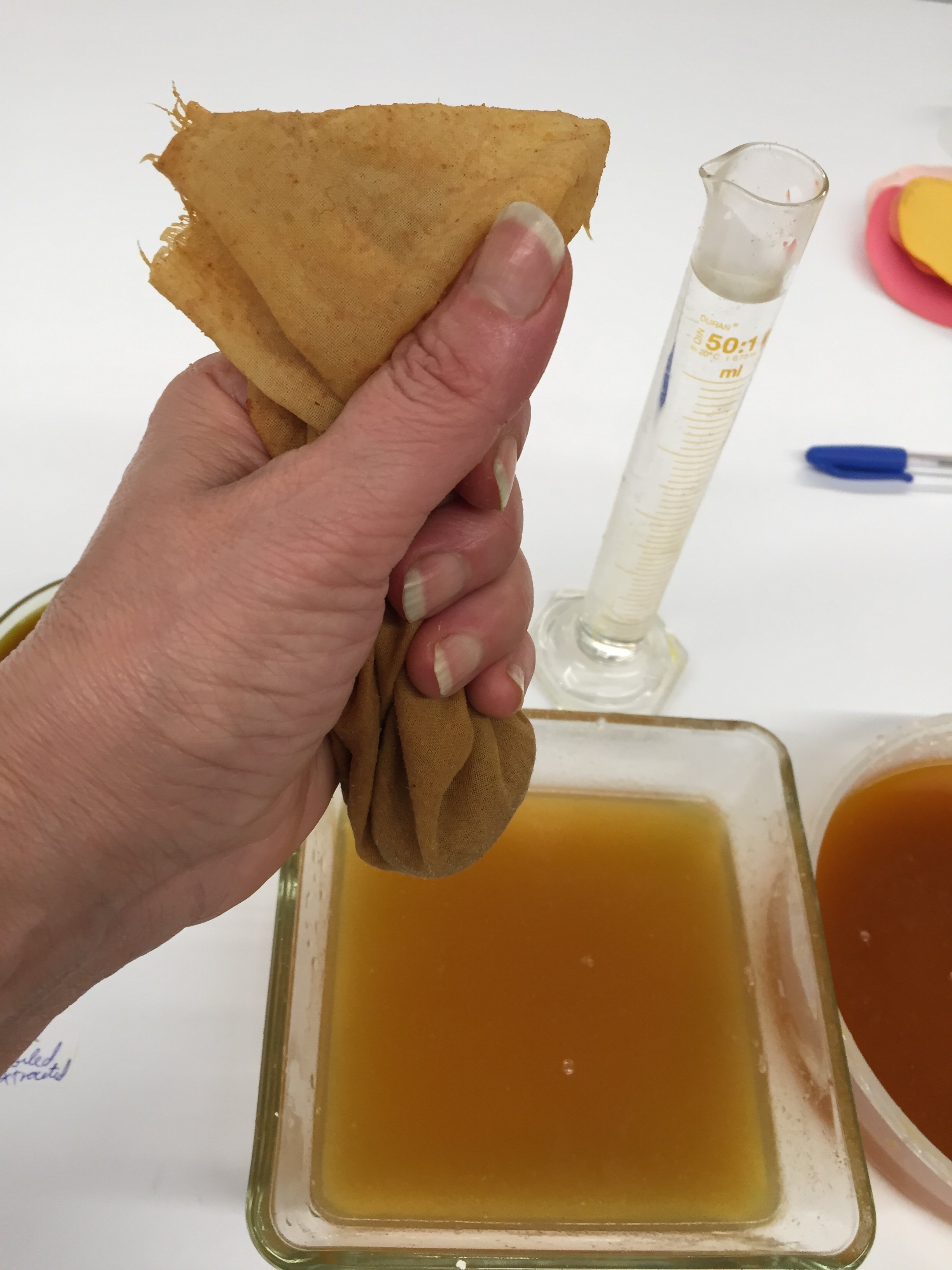YELLOW RUBI (ZARD-E-LAʿLĪ) TO RED RUBI (LAʿLĪ)
The procedure for producing yellow rubi (zard-e-laʿlī), which has a red-yellow shade resembling saffron color, is explained in two sources: Resaleh-ye Joharrieh ((837 AH/1433 A.D.) and Resāleh Dar Maʿrefat-e Kāğaḏ-e Alvān (19th century), in great detail. The recipes provided in these two sources are identical and described almost in the same manner as the safflower process for making āl and sorkh paper mentioned under primary colours. The recipe continues to explain how to achieve a more reddish color called laʿlī, a process that involves several stages, allowing for the creation of various shades from yellow to red. The recipe reads as follows:
بستاند به وزن تبریز نیم من گل کاجیره أصفهان، و نرم بکوبد؛ و بیزد، و در کیسه کرباس محکم کند. و سرش ببندد، و کیسه را با گل در میان تغار نهد، و سه مشربه یا چهار مشربه آب بریزد، و کیسه را با گل در میان تغار نهد، و سر دست چندان بمالد که آب زرد شود، و به سرخی زند، و آب که در تغار باشد زعفرانی شود. بعد از آن یک صاف کرده رنگ کند، و باز این کیسه گل را در میان تغار نهد، و دو مشربه آب بر بالای آن ریزد، و چندان دست بمالد که آب زرد را تمام بگذارد، و به سرخی آید. اگر یک نوبت چنین نشود، دگرباره همجنس کند، تا به سرخی بزند. بعد از آن کیسه را بدو کس سخت بیفشارد چنانچه هیچ آب با گل در کیسه نماند. و بعد از آن سر کیسه را باز کند، و آن گل در جای پاک ریزد، و چندان بمالد که آن کیسه پاک کند، و در تغار نهد، و چندان بدست بمالد که آن کیسه لعلی شود. آبی که از آن حاصل شده باشد، یک دم بگذارد تا قرار گیرد، و هر قدر کاغذ که خواهد بیاض سازد و سرکه ترش صافی با آن ریواس صافی یا آب انار ترش صافی مقدار بیست درم در میان لعلی که در تغار است بریزد، و بهم برآرد. و یک عدد بیاض نهد، و یک لحظه صبر کند، و بعد از آن بیرون آرد. لعلی شده و باید که در تغار بزرگ باشد
Take half a mann-e Tabriz[1] of safflower (gol-e kājireh-e Esfahan), finely grind it, sieve it, and place it inside a muslin cloth sac. Close the sac of safflower and place it in an earthen pot. Pour three to four jars (mašrab) of water over it, and knead the flower sac inside the vessel until the water's color changes to reddish-yellow, and the water inside the vessel turns saffron (zaʿfaranī) in color. Filter this solution and use it to dye the paper. If, in the first attempt, all yellow coloring substance is not extracted, repeat the process by placing the safflower sac in the earthen pot, pouring two ewers of water over it, and kneading it with fingers until all the yellow bile is extracted, and the extract starts to turn red.
Then, squeeze the safflower sac with the help of two people to ensure no water remains. Open the sac, place the flower in a clean sac, and pour water over it in an earthen pot while kneading with fingers until the sac turns red. Allow the red extract to settle for a while, then add 20 dirams of filtered sour vinegar, sour rhubarb, or sour pomegranate to mix with the dye. For dyeing, dip a white paper in it. When taken out, a red paper is obtained. The earthen pot used should be large.
[1] mann-e-tabriz = weight unit which varies according to the custom of the country between 40 to 84 Ibs. In Iran, mann-e-tabriz or mann is a weight of 3 kg (3,000 grams) or 40 sers (one ser is equivalent to 75 grams).
Experiment:
The process is like āl paper using red safflower extract and dyebath in one process and in a shorter time of period. Start by taking 5g of safflower petals and grinding them thoroughly with a pestle and mortar or an electric blender. Transfer the ground petals to a muslin cloth, tightly closing it to form a sac. Wash the sac with cold water until all the yellow colorant is extracted. To check, moisten a piece of white cloth with the dye releasing from the sac. If a yellow stain appears, continue the washing process. Conversely, if a red stain is observed, the washing process is complete. Thoroughly squeeze the washed safflower in the sac.
Next, transfer the safflower to a mortar and rub it with your fingers. Add 1–2g of alkaline ash to the mortar (the ratio of ground safflower to alkaline ash is approximately 5:1, grinding them together slowly until the red colorant appears. Transfer the mixture back to the muslin sac. Use a pipette to slowly pour warm water over the sac until the safflower dye is extracted. Separate the first superior extract from the second and the last, resulting in three different shades.
Pour a small amount of lemon juice, about 10 ml, into the red safflower dye. Add lemon juice gradually as needed. Dip the paper in the mixture and immediately take it out. Let it dry in the shade. Different shades of color can be achieved based on the duration the paper is kept in the mixture, ranging from zard-e-laʿlī to laʿlī shade of colours



